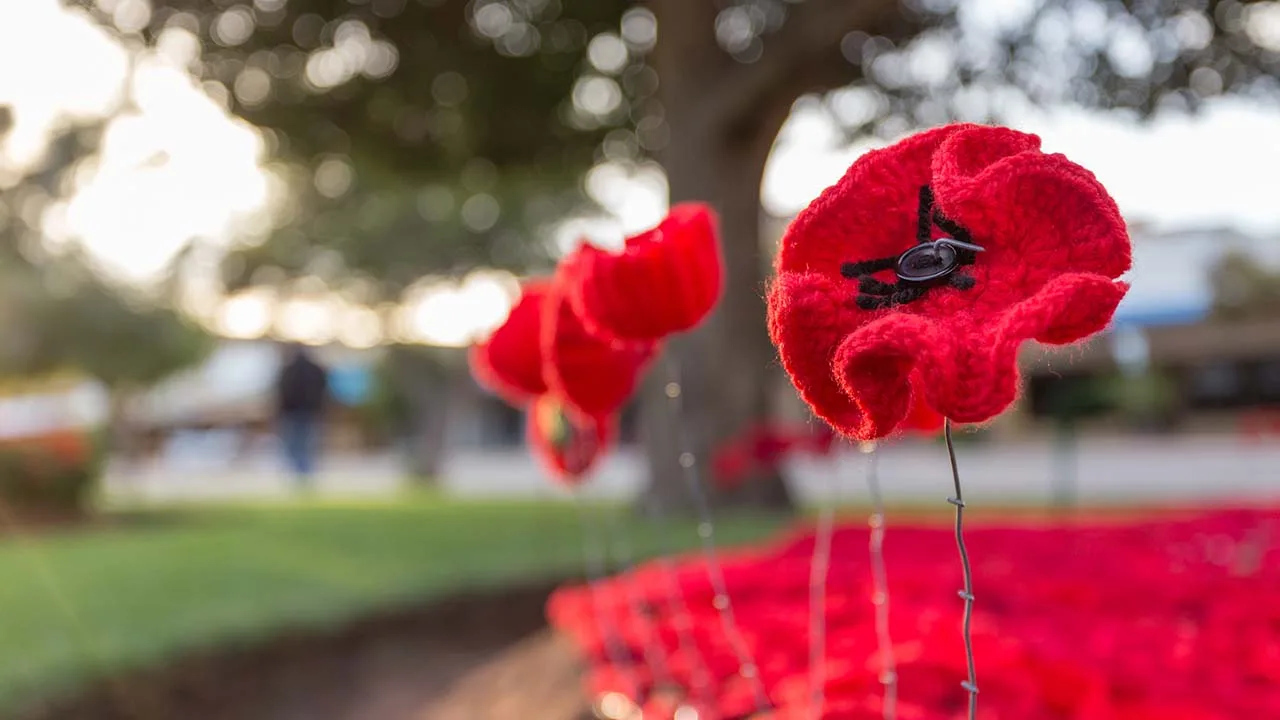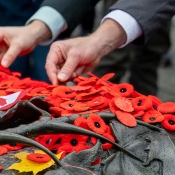
Understanding Canadian Remembrance Day
Remembrance Day in Canada, also known as “National Remembrance Day,” is held annually on November 11. The commemorative activities on this day originate from the Armistice Agreement signed at the end of World War I, which officially came into effect on November 11, 1918, at 11 a.m. Over time, the Canadian government officially designated this day as a national holiday in 1931 to commemorate Canadian soldiers who died in wars around the world. Since then, Canadians have observed this day every year to remember those heroes who sacrificed for the country and to reflect on the importance of peace.
In Canada, on November 11 at 11 a.m., people observe two minutes of silence to express their sorrow and respect for the fallen soldiers. Grand memorial ceremonies are held across the country, with veterans, active military personnel, and ordinary citizens participating. During these activities, people often wear red poppy flowers, symbolizing the remembrance of soldiers who lost their lives in wars. Additionally, many cities hold parades, memorial speeches, and wreath-laying ceremonies to honor those who sacrificed their lives. Schools and community organizations also hold various commemorative activities to educate the younger generation about this history. This day is not just a memorial day but also a profound reflection on the social and cultural values of Canada, emphasizing peace, freedom, and respect for life. For many international students in Canadian primary and secondary schools, this might be one of the few times they are required to gather in the school auditorium or stand up in their classrooms for a special event and hear the Canadian national anthem for the first time. Typically, the homeroom teacher will explain the origins of this day and the school’s commemorative ceremony process to the students in advance.
Although Canada’s Remembrance Day and the United States’ Veterans Day fall on the same date, their meanings and ways of commemoration differ slightly. Canada’s Remembrance Day focuses mainly on commemorating soldiers who died in wars, with activities centered on mourning and remembrance. On this day, people revisit history, observe moments of silence, lay flowers, and wear red poppies as symbols. In contrast, Veterans Day in the United States honors all veterans, including those who survived the wars. Therefore, U.S. commemorative activities include not only mourning but also gratitude and congratulations to active and retired military personnel, with more diverse forms of celebration. Grand parades, gatherings, and even community celebrations are held across the United States to engage more people. Although the two countries share the same commemoration day, their focus and forms reflect different historical backgrounds and cultural connotations.
Remembrance Day in Canada is not only a commemoration of soldiers who died in wars but also a strong call for the value of peace. Through the commemorative activities on this day, Canadians revisit history and remember the importance of peace. Compared to the U.S. Veterans Day, Canada’s commemoration activities carry a deeper sense of sorrow and gravity. Though the commemorative days in both countries differ, they both express profound respect for the selfless dedication of military personnel. Through these activities, we not only inherit the legacy of our predecessors but also cherish the hard-won peace and freedom even more. Remembrance Day in Canada reminds us that no matter where we are, peace is a precious value that needs to be carefully maintained. We should continuously strive to promote world peace, avoid the recurrence of wars, and allow future generations to live in a better world.
Introduction to Remembrance Day in Canada
Remembrance Day, also known as National Remembrance Day, is observed on November 11. On this day, Canadians across the country commemorate soldiers who died in wars, expressing deep sorrow and respect for all heroes who sacrificed for the country.
Origins of Remembrance Day
It commemorates the Armistice Agreement signed on November 11, 1918, which ended World War I. The armistice came into effect on November 11, 1918, at 11 a.m. In 1931, the Canadian government officially designated this day as a national holiday to remember Canadian soldiers who died in wars around the world.
Commemorative Activities on Remembrance Day
Every year on November 11 at 11 a.m., the nation observes two minutes of silence to express sorrow for the fallen soldiers. People wear red poppies to commemorate the fallen soldiers, symbolizing remembrance of those who lost their lives in wars.
Public Commemorative Activities
Parades, memorial speeches, and wreath-laying ceremonies are held. Veterans, active military personnel, and citizens participate. Communities and schools across the country take part in these activities. School and community activities educate the younger generation about history, helping them learn and understand the importance of this period.
School Commemorative Activities
These activities are usually held in school auditoriums or classrooms during the first period. The homeroom teacher typically introduces the Canadian National Anthem, explains the significance of the day, and outlines the ceremony process.
Comparison with U.S. Veterans Day
- Similarities:
- Both are observed on November 11.
- Differences:
- Canada: Focuses on remembering and mourning fallen soldiers.
- US: Celebrates all veterans, including survivors. U.S. commemorative activities are more celebratory, with parades and community events to thank and congratulate veterans.
Importance of Remembrance Day
It highlights the values of peace and freedom, emphasizing the commemoration and respect for soldiers’ sacrifices. Through these activities, Canadians revisit history, reflect on the lessons of war, and stress the preciousness of peace and human life.







